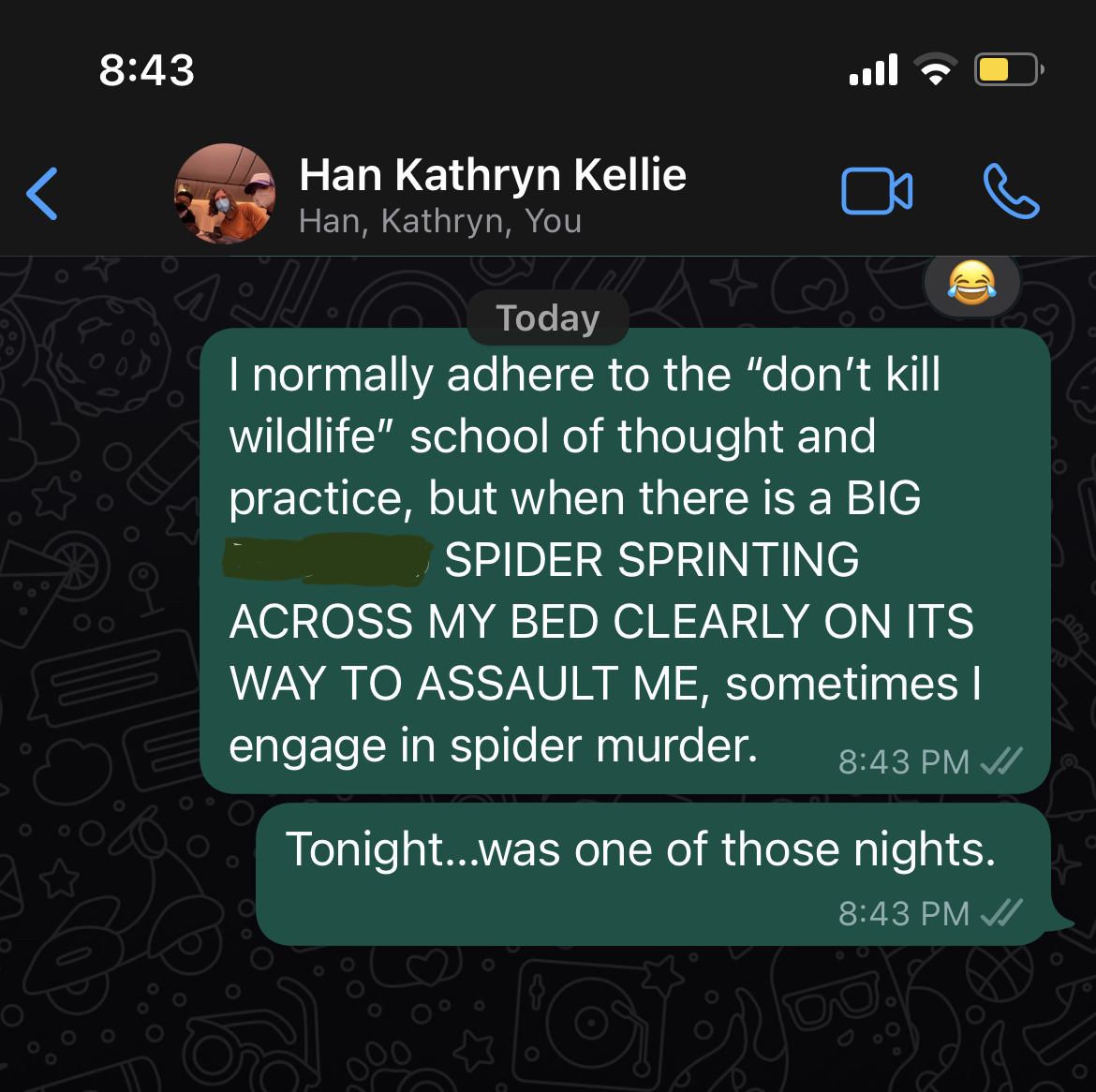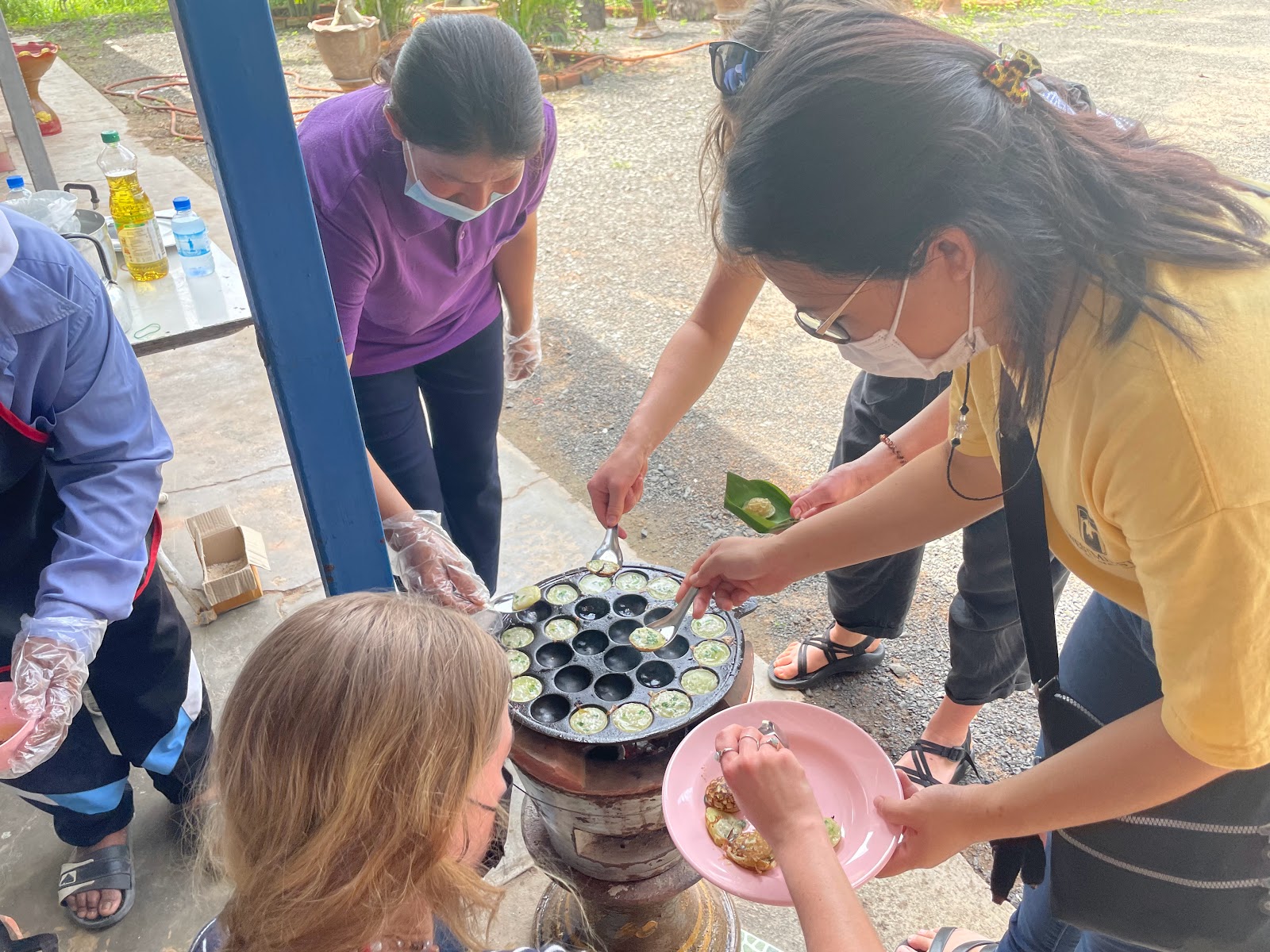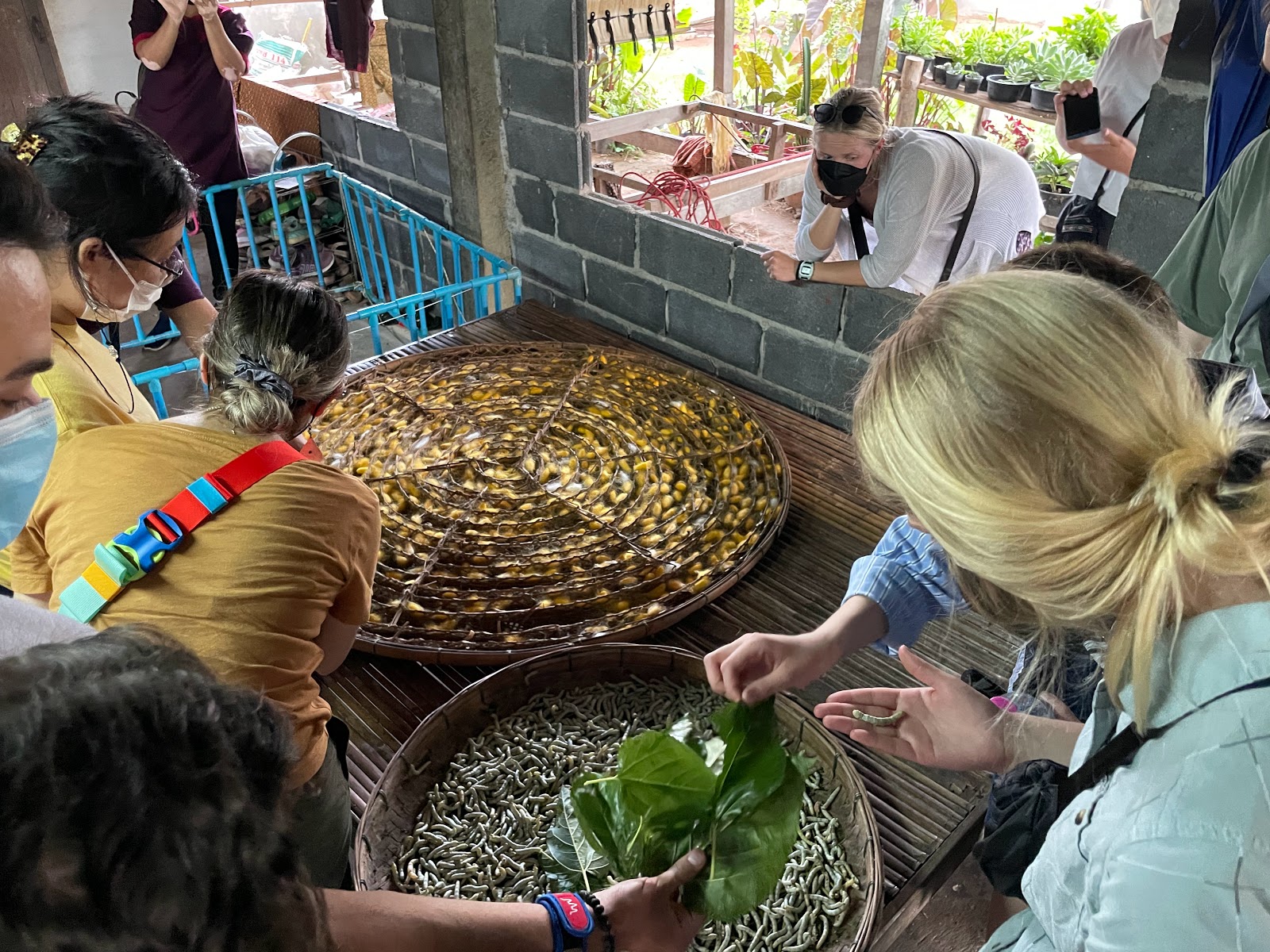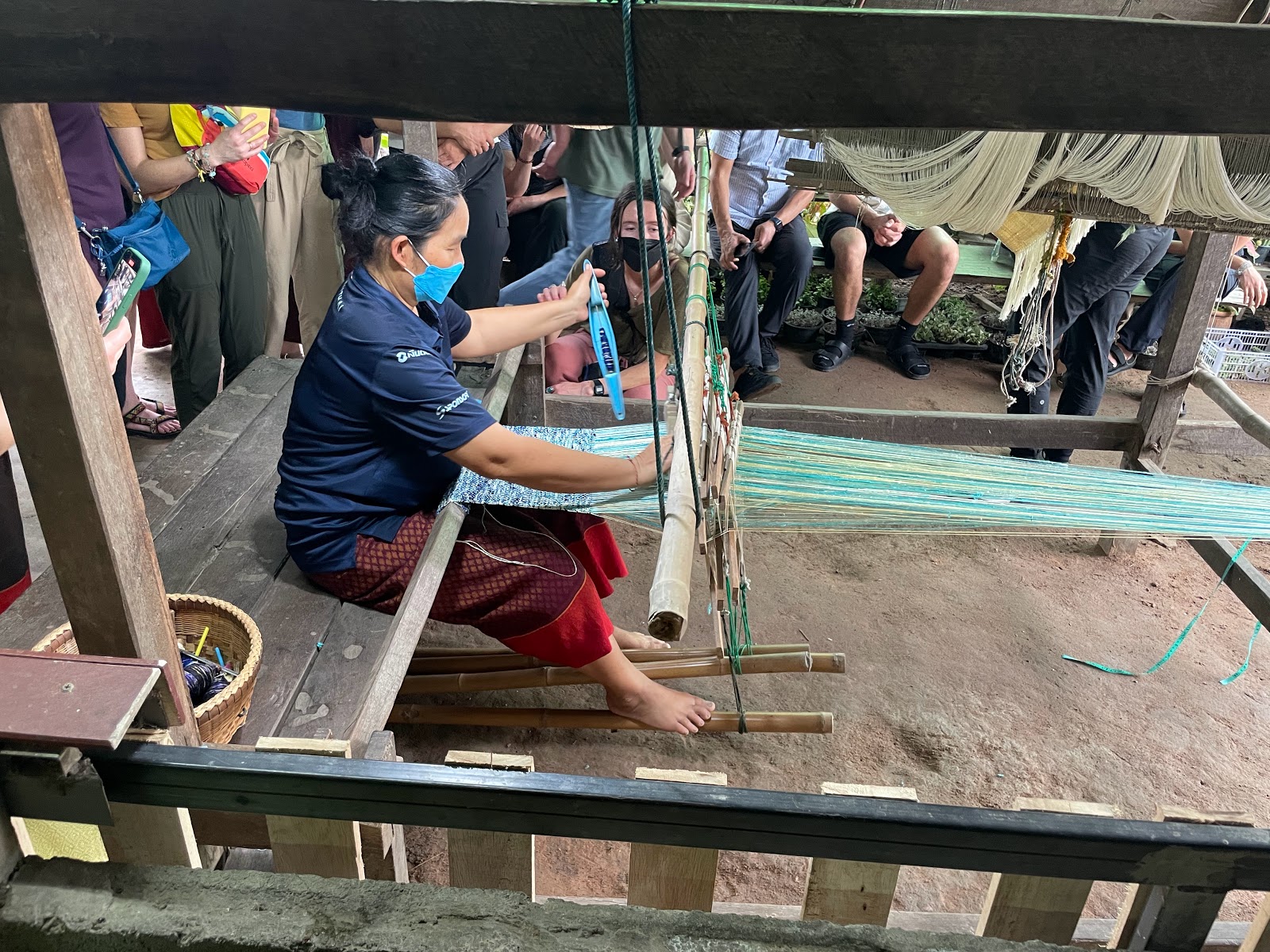We left Cabbages and Condoms around 8AM with the goal of visiting several local rural villages who are in partnership with the Population and Community Development Association (PDA) that I mentioned in the last post.
Our first stop was Wat Ban Khok Phluang (I think that’s the name of the town?). In this village, we learned about how the PDA partnered with the community to build water retention and irrigation systems to help preserve water collected during the rainy season (approximately April -June) to irrigate crops / serve houses during the dry season. Thailand is a country of extremes—while it has seemed to be perpetually rainy and humid since our arrival, we are at the very beginning of rainy season. Certain parts of the country, including the Buri Ram province, go through extreme periods of dryness/drought, so it’s important for local communities to find ways to maintain a water supply.
Students learning about the water conservation and irrigation process
In addition to helping build the water collection/irrigation system, the PDA worked with locals to teach them farming techniques so they could use their new skills—coupled with micro-finance loans—to develop their own agricultural businesses (selling crops to other local communities). Based on our observations and conversations with the community, the initiative seems to have been very successful. I think I remember hearing that their primary crops are tapioca and rice? Don’t quote me on that.
Example of water conservation / irrigation project
Stop two was another local village and for the life of me I cannot figure out its name. I *think* it would have been somewhere along the road connecting Wat Ban Khok Phluang to the Mechai Bamboo School. I think.
And to be clear, this resort is super clean and awesome, but we are in the middle of a subtropical forest region and there are just a bazillion critters. There’s currently a little gecko scrambling about my room right now, and I’m glad it’s here because it will eat the other spiders who have plans to attack me in my sleep. Also, geckos are super loud. Who knew?
But I digress. The second village explained that they produce honey and items for natural remedies and body care. Representatives hosted a demonstration in which they created the base for toothpaste using natural ingredients. The menthol smelled amazing. The villagers also fed us these super tasty coconut/rice flour pancakes (kanom krok) and fresh coconut water. Yum!
But I digress. The second village explained that they produce honey and items for natural remedies and body care. Representatives hosted a demonstration in which they created the base for toothpaste using natural ingredients. The menthol smelled amazing. The villagers also fed us these super tasty coconut/rice flour pancakes (kanom krok) and fresh coconut water. Yum!
Students learning about the kanom krok process
The finished product (kanom krock)
Students learning how to make toothpaste from natural ingredients
Stop 3 was the highlight of the day for most folks: the Mechai Bamboo School. It’ll be impossible to describe how incredible this school and its students are in a blog post. The mission of the school is to have “a cheerful revolution in rural education.” Students pay no tuition; instead, the students and their parents complete 800 hours of community service and plant 800 trees a year. Students are heavily involved in school governance and engage in their surrounding communities. I would strongly encourage my readers (and my readers, I mean my mom ) to watch this short video to get a better sense of what the Mechai School is and what makes it special.
When we arrived at the school, we all got a surprise COVID test (!). Luckily, we all tested negative. The students and a few faculty gave us a tour of the school grounds, and then we were treated to a delicious lunch with produce grown on-site at the school, a musical demonstration, and several science demonstrations to explain tissue sampling and how their hydroponic growing system works. One of my favorite parts of this experience was watching our Westminster students develop connections with the Mechai students. By the end of the afternoon, they were swapping Instagram handles.

Everything is colorful at the Mechai School

Getting ready to enter the bamboo dome/take a surprise COVID test
- feeding the silkworms
- boiling their cocoons to extract the silk
- boiling the raw silk to soften it
- dying the silk
- and lastly, the weaving process
MTSE faculty eating silkworms
Okay, that’s probably enough for now. I need to discuss a plan of attack with the geckos.













No comments:
Post a Comment